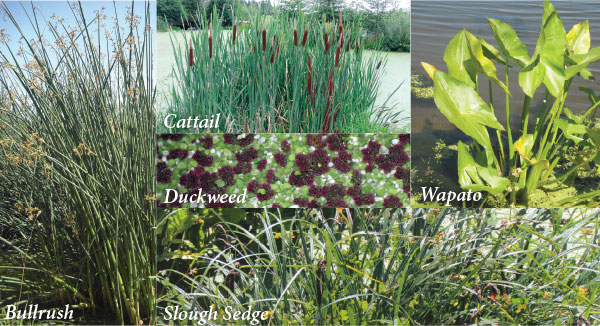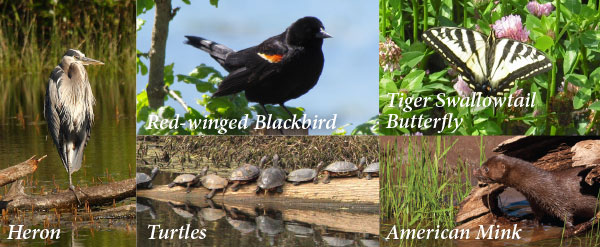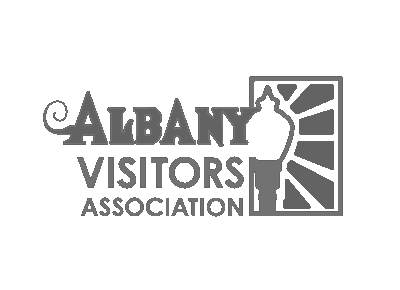In 2010, the cities of Albany and Millersburg joined with metals manufacturer ATI to create an engineered water treatment wetland called Talking Water Gardens. Inspired by the environment, the wetland cells mimic the cleansing and cooling processes that occur in nature, returning treated water safely back to the Willamette River.
Download a copy of this information as a PDF
Free and open to the public 7 days a week, sunrise to sunset
577 Waverly Dr NE, Albany, Oregon
Safety rules
For your safety and everyone’s enjoyment:
- Do not disturb or feed the wildlife
- Keep pets on a leash
- Stay on the walking paths/trails
- No swimming
- No smoking
- All other City ordinances apply
Benefits
- Restore riparian forest and wetlands through plantings of native species.
- Reduce water temperature, or excess thermal load (ETL), to protect sensitive fish habitat.
- Naturally aerate and treat water to improve water quality by reducing pollutant levels, including the removal of nitrogen and phosphorus.
- Promote wildlife habitat in a former industrial area by reclaiming treated wastewater for use in healthy wetlands environments.
- Create a living laboratory that brings wetland science to life for K-12 and university students and informs visitors about responsible water reclamation and environmental sustainability.
- Create a new natural attraction for Albany-area visitors that integrates the history of the site and the Willamette River.
Don’t Let it Loose!
Please don’t release your home or classroom plants and pets at Talking Water Gardens or into the wild.
They are harmful to native species of plants and animals and threaten their habitat. For more information, visit the Oregon Invasive Species Council.
How it works

Wetland Plants

There are many varieties of wetland plants at Talking Water Gardens including emergent aquatic plants that cast a shadow over the water for a cooling effect, as well as submerged and floating vegetation.
Wildlife

In addition to water treatment, Talking Water Gardens provides habitat for wildlife including over 100 species of birds and waterfowl, as well as small mammals, reptiles and insects – making it a popular destination for birders, photographers and nature lovers alike.
Photo Galleries
Points of interest
A. Walking Trails - Talking Water Gardens is open to the public daily and offers over two miles of walking trails and viewing areas for all to enjoy. Much of the trails are wheelchair-accessible and provide both elevated and water level viewpoints as well as opportunities for observing wildlife.
B. Main Waterfall – one of several waterfalls throughout Talking Water Gardens that oxygenate and mix the water as it cascades over the rocks and natural topography. The sound a waterfall makes is known as “talking water”.
C. Northern Influent Point – where the water begins its journey through the treatment wetland. Water is pumped to this high point where it is mixed and split and then drains by gravity to the other wetland cells.
D. Weeping Wall – a water feature at the site of the former Simpson plywood mill where you can see water cascading over a portion of the mill’s original loading dock that was left standing.
E. Wetland Cell – there are nine main wetland treatment areas or cells, each with a unique name, that are one to five feet deep and contain stands of vegetation as well as open water habitat areas. The deeper open water provides mixing and viewing areas, while the shallow vegetated areas provide shade for cooling and treatment of the water.
F. Oak Savanna – a common habitat in the Willamette Valley in the past, these Oregon white oak trees create a special place in Talking Water Gardens. An attractive and slow growing deciduous hardwood tree, the Oregon white oak is native to Oregon and provides much-needed habitat for wildlife.
G. Outlet Weirs – simple flow control structures made of wooden stop logs that are lifted or lowered to control the amount of water in each wetland cell. The weirs are adjusted throughout the year for plant and habitat needs as well as for maintenance activities.
H. Final Discharge Point – the lowest point of Talking Water Gardens where all of the treated water flows to before exiting the wetland through a pipe to the Willamette River.





